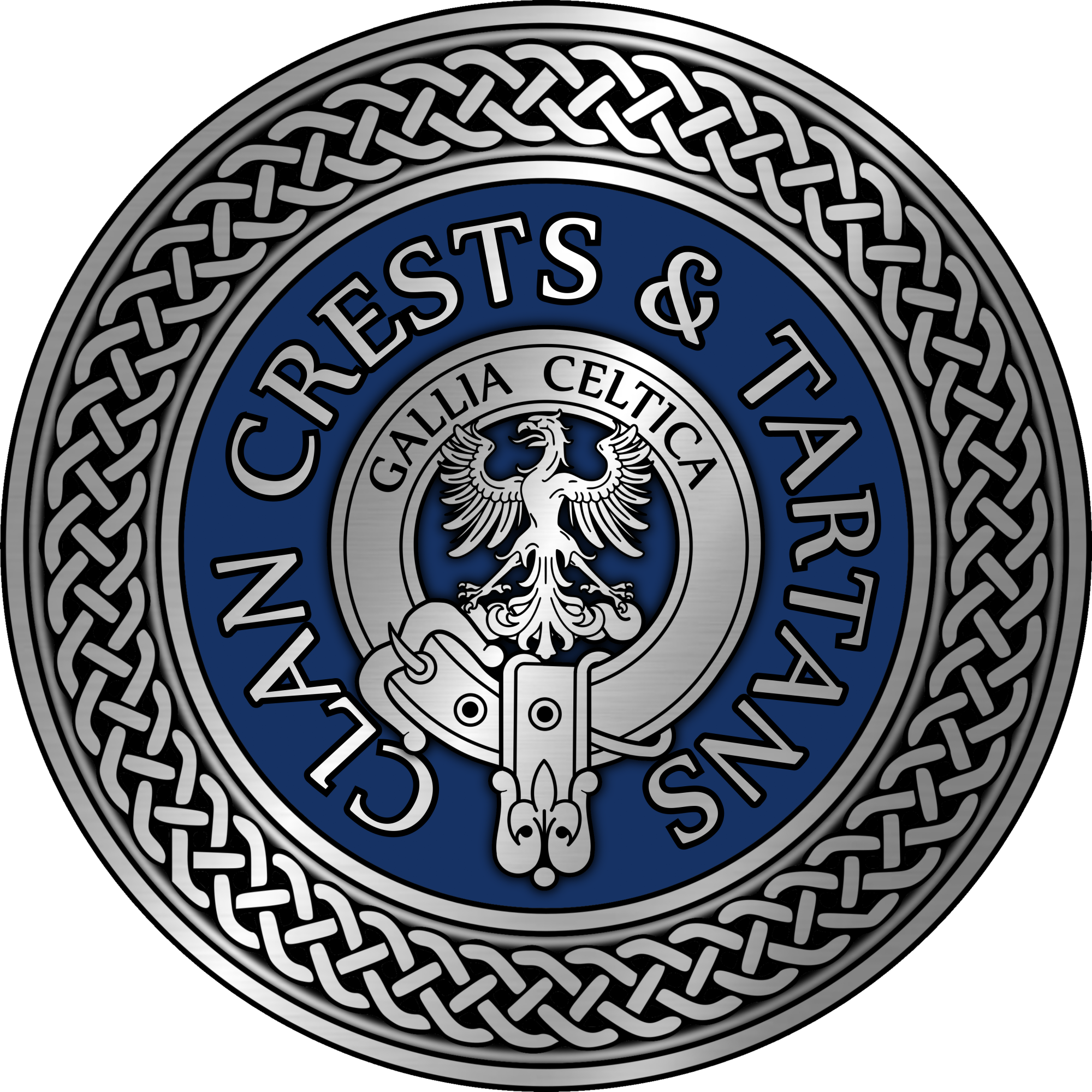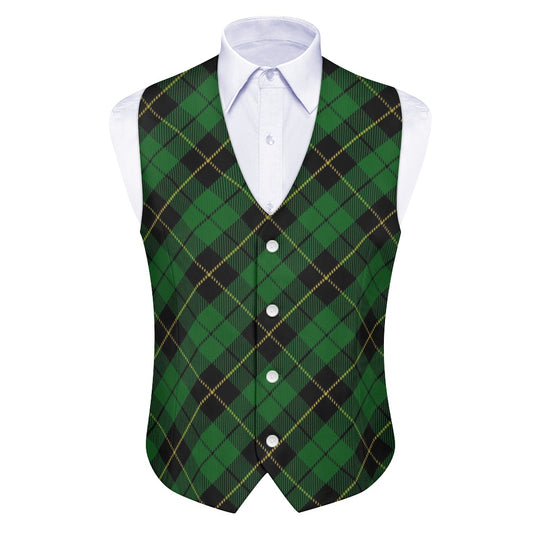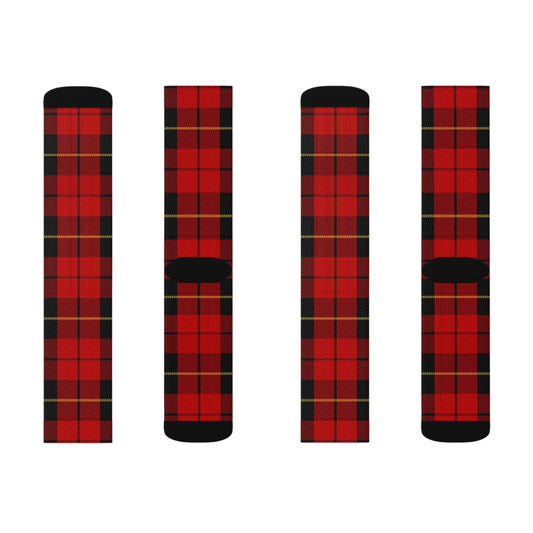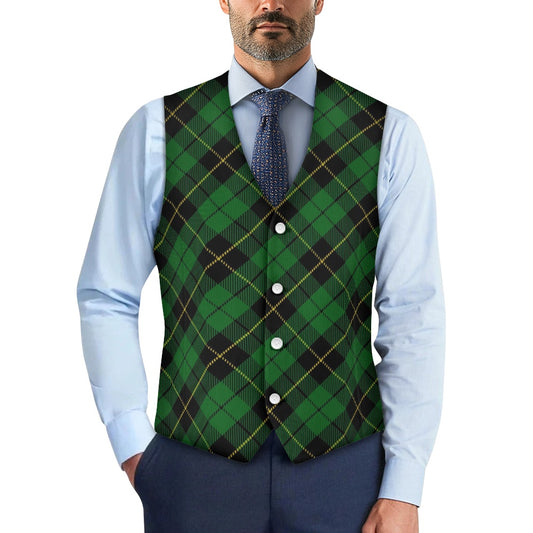

Clan Wallace is a Lowlands Scottish Clan and is officially recognized as such by the Lord Lyon King of Arms. The most famous member of the clan was the Scottish patriot William Wallace of the late 13th and early 14th centuries.
Profile
Crest: Issuant from a crest coronet of four (three visible) strawberry leaves Or, a dexter arm vambraced, the hand brandishing a sword all Proper
Motto: Pro libertate (For liberty)
War cry: Freedom
Region: Lowlands
District: Ayrshire and Renfrewshire
Plant badge: Oak
Chief: Andrew Robert Wallace, 36th Chief of the Name and Arms of Wallace
Clan Relationships
Branches
Wallace of Cragie
Wallace of Cairnhill
Wallace of Cessrock
Wallace of Elderslie
Wallace of Auchenbathie Tower
Wallace of Kelly
Wallace of Riccarton
Wallace of Carnell
Wallace of Sundrum
Allied Clans
Comyn
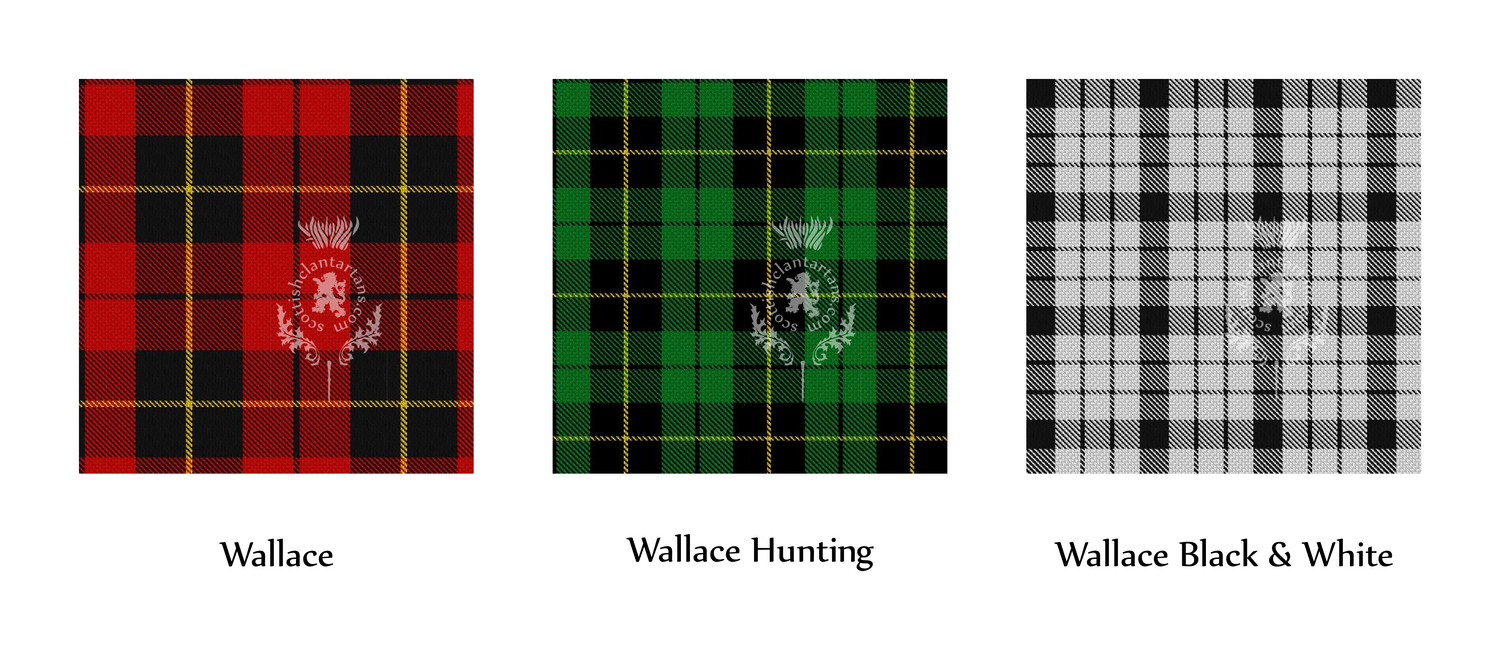
Clan Tartans
Shop Wallace TartansClan History
The Wallace family first came to Scotland with a Breton family in the 11th century. David I of Scotland was eager to extend the benefits of Norman influence and gave grants to the nobles of the south. Among them was Walter fitz Alan, who the Scottish king appointed his Steward in 1136. One of Fitzallan's followers was Richard Wallace from Oswestry who came north to try to improve his fortunes. Oswestry is on the Welsh border. So it is possible that the name Wallace may be a corruption of Le Waleis meaning the "Welshman". One similar theory is the name's being derived from the Old English wylisc (pronounced "wullish"), meaning "foreigner" or "Welshman".. However, while it is possible that the Wallaces in the Clyde area were originally Britons from Wales, who came north with David I of Scotland in the eleventh century, another theory is that they were Britons who had settled in Strathclyde/Strathclyde kingdom in the tenth century, as the “Welsh” term was also used for the Cumbric-speaking Celtic Britons of that area.
The Steward received from King David lands in Ayrshire and so it was here that his follower Richard Wallace settled. Richard Wallace was granted his own estate in Kyle, where it is claimed that his name Richard is still remembered in the placename of the village of Riccarton. Richard Wallace (Walensis) held lands in Kilmarnock and was a vassal of the High Steward of Scotland before 1160. His grandson was Adam Walays who in turn had two sons, the eldest of whom succeeded to the family estates in Ayrshire. Adam's younger son was Malcolm Wallace who received the lands of Auchinbothie and Elderslie in Renfrewshire.
Wars of Scottish Independence
Malcolm Wallace appears in the Ragman Rolls of 1296 paying allegiance to Edward I of England, however later he was one of the few Scottish nobles who refused to submit to Edward and as a result he and his son, Andrew, were executed. According to some sources Malcolm was the father of the Scottish patriot William Wallace, however the seal of William Wallace, rediscovered in 1999, identifies him as the son of Alan Wallace of Ayrshire, who also appears in the Ragman Roll of 1296 as "crown tenant of Ayrshire". Dr. Fiona Watson in "A Report into Sir William Wallace's connections with Ayrshire", published in March 1999, reassesses the early life of William Wallace and concludes, "Sir William Wallace was a younger son of Alan Wallace, a crown tenant in Ayrshire".
During the Wars of Scottish Independence William Wallace and Andrew de Moray began a successful military guerrilla campaign against the English. In 1297 they won a great and stunning victory over the English at the Battle of Stirling Bridge, after which Wallace was knighted as Guardian of Scotland. Wallace was also in command at the Battle of Falkirk in 1298, but there he was defeated by the superiority of the English numbers. Wallace was eventually captured at Robroyston near Glasgow and delivered to Edward Longshanks of England by a senior Scottish law officer – Sir John Mentieth. Wallace was subjected to a show trial, in which he was found guilty of treason and hanged, drawn, and quartered at Smithfield, London in 1305.
Border Wars
The Wallaces of Cragie from whom the senior branch of the clan is descended obtained their estate during the late 14th century, through the marriage to the heiress of Sir John Lindsay of Cragie. In October 1449, Sir John Wallace of Cragie was a commander at the victory over the English, at the Battle of Sark. William Wallace of Carnell was killed at the Battle of Flodden in 1513.
Wallace Collection
-
Clan Wallace Tartan Swim Trunks
Regular price $63.00 AUDRegular priceUnit price per -
Clan Wallace Tartan Socks
Regular price $24.00 AUDRegular priceUnit price per -
Clan Wallace Hunting Tartan Suit vest jacket
Regular price $79.00 AUDRegular priceUnit price per -
Clan Wallace Hunting Tartan Suit vest jacket
Regular price $79.00 AUDRegular priceUnit price per
17th Century and Civil War
The Wallaces of Cragie branch descend from the uncle of the patriot, William Wallace, and in 1669 Hugh Wallace of Craigie was created a Baronet of Nova Scotia.
A contemporary Wallace, James Wallace served as a captain under General Robert Monro when he occupied Huntly Castle of the Clan Gordon in 1640. Another contemporary Wallace, Sir Hugh Wallace, a royalist raised a regiment for King Charles Stuart during the Puritan revolution of Oliver Cromwell.In 1669 Hugh Wallace of Cragie was one of the Scottish nobility who was created a Baronet of Nova Scotia under Sir William Alexander of Menstrie's scheme to promote that part of Canada as a Scottish colony.
Also in the 17th century, mathematician John Wallis was the first to deal with the concept of infinity mathematically and paved the way for the development of calculus and binomial theorem in his 1657 work Arithmetica Infinitorum.
19th Century
In the 19th century, eminent naturalist and author, Alfred Russel Wallace, developed his own theories on evolution, based on his studies of flora and fauna in South America and in the East Indies, independently of Charles Darwin. Both theories were published simultaneously in 1858. Thomas Wallace served as the vice-president of the British Board of Trade, who in 1821, cut the duties long imposed on Baltic timber; the act heralded the end of the mercantile system that had existed since England had first established colonies. Sociologist Graham Wallas was an early leader of the Fabian Society, along with George Bernard Shaw, an organization which promoted the peaceful and democratic "permeation of (British) politics with socialist and collectivist ideas." Sir Richard Wallace was a great collector of painting, sculpture and furniture, primarily 18th-century French. He bequeathed his collections to the people of Britain; upon his death in 1897 they became known as the National Wallace Collection.
Wallace Collection
-
Clan Wallace Tartan Swim Trunks
Regular price $63.00 AUDRegular priceUnit price per -
Clan Wallace Tartan Socks
Regular price $24.00 AUDRegular priceUnit price per -
Clan Wallace Hunting Tartan Suit vest jacket
Regular price $79.00 AUDRegular priceUnit price per -
Clan Wallace Hunting Tartan Suit vest jacket
Regular price $79.00 AUDRegular priceUnit price per
